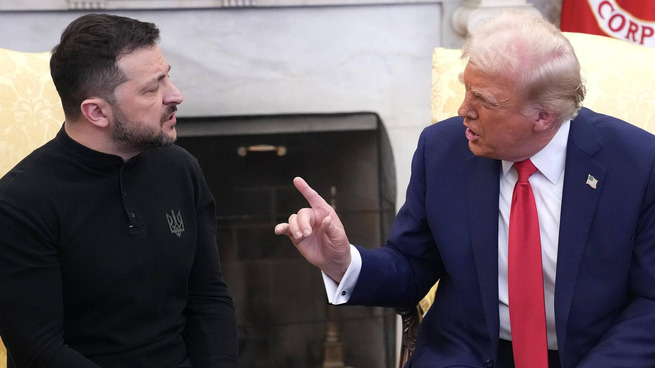In the US, digital television is progressing at a significant pace. The country has many television stations in 2 bands - decimeter and meter, and more than 170 of the largest stations can broadcast in both analog and digital mode - watch american news live online. Approximately 67% of families watch cable TV.
There are about 10 thousand different independent stations in the USA. Satellite television services, covering about 20 million people, are becoming popular.
But most importantly, this is how the television environment is changing with the introduction of digital broadcasting. Everyone knows the paradox about the priority of chicken or eggs. The same can be said about the paradox of digital television. Of course, why build expensive facilities for transmitting a digital signal when there are not enough television receivers to receive it? In turn, manufacturers ask the question: why are we going to produce digital receivers for television, when the necessary broadcasting facilities are not yet available?
The second paradox is connected with producers and consumers of digital services. Manufacturers could provide interesting programs to the market, but they will not do this until there are enough receivers on the market that consumers will buy. And consumers do not want to buy television receivers, because they know that while there are no interesting television programs in digital format.
Of course, we have a federal construction plan (this concerns the NTSC system), there is also a digital signal that accompanies this format on different channels, and buyers of digital receivers in the US can receive the program in digital mode. When analog television ceases to exist, certain programs will be broadcast on digital channels, and the vacant spectrum will be available to ambulance, police and other government services. Therefore, we need to switch to digital broadcasting as quickly as possible.
Starting from 2004, according to the plan that had been worked out, US broadcasters are obliged to switch to digital broadcasting.
The history of digital broadcasting in the United States developed as follows. From 1998 to 2002, the growth of the digital broadcasting market was very slow, but since mid-2002 the situation has changed, and now we have more than 1000 stations of this type operating in digital mode.
90% of the US population lives in more than 220 cities, 82% of the population live in communities where there are one or more digital TV stations, and half of American families live in cities where there are more than 8 digital TV stations.
Thus, the chicken laid an egg, and this egg is digital television, but this does not mean that manufacturers are quickly responding to changes in the digital TV market. However, in the United States produce HDTVs, with which you can actually get the same programs as in analog mode, but HD quality with Dolby Surround sound, and watch them on widescreen screens. Of course, most conventional TVs can also receive HDTV signals, but this technique is not as good. Such a digital broadcast business model exists in the United States.
At the same time, manufacturers are gradually beginning to take into account the needs of the digital TV market: new brands have emerged, various product modifications already existing in this market. According to the Electronic Consumer Association, during the 3rd quarter of this year, 7 million digital TVs were sold. By the way, the price for them has fallen by half. However, most digital television receivers not only receive digital signals, but they also have a DVD unit, a tuner and a special decoder, which also contributes to a certain increase in demand for digital TVs.As part of the country's transition to digital broadcasting in the current year, the Federal Telecommunications Commission of the United States decided to use special tuners and cable for digital broadcasting, since not only broadcasters but also other industries are associated with digitalization, and they are also under the control of the US government, which is trying to use a systematic approach to the introduction of digital broadcasting schemes.
In April last year, Michael Powell, the chairman of the Federal Commission, developed a plan that all industries that are involved in broadcasting (cable networks, satellite networks, producers of satellite programs, etc.) must cooperate voluntarily with television broadcasters. . He turned to studios-production with a proposal to shoot programs, and to cable networks - to start broadcasting in digital format. Powell also made a similar request to terrestrial broadcasting services, and now the new TVs are definitely equipped with HDTV and tuners.
All industry representatives (with the exception of digital TV manufacturers) greeted this plan with enthusiasm. In August of this year, the US government decided that since July 2004, all new televisions produced and sold in the United States should have digital tuners. This will result in consumers better targeting digital broadcasting, with the ability to receive a limited digital signal.
Regarding the cost of digital TVs, the following picture is observed here: unique schemes are beginning to be used for their production, which leads to a significant reduction in prices, as well as the mass production of such equipment. All this should lead to a speedy transition to digital broadcasting. Therefore, we need to adjust the access of the digital signal to the wide consumer in order for digital TV to gain the same distribution as cable or satellite, which have their own decoders and subscriber base.
67% of the US population has access to cable signals, 20% use satellite broadcasting and only 15% use terrestrial broadcasting systems. Therefore, cable television has an important role to play in the development of digital broadcasting. In the USA, it is possible to transmit either a HDTV signal on one channel, or use this channel to receive more programs, but with a different image quality.
With the introduction of digital television, the problem of poor signal quality in the cable must be solved, while now many cable TV subscribers cannot receive signals in the HDTV format, and broadcasters who are currently engaged in HDTV are also interested in delivering multi-program products to the viewer.
That is why the Federal Television and Radio Broadcasting Commission decided to combine cable broadcasting with digital, and this is in the interests of both the producers of programs from Hollywood and other production studios, and the manufacturers of computer equipment.
In addition to HDTV, digital broadcasting has other options. This is, for example, data transmission, which can be used for interactivity, and it is important that many interactive applications do not require a return channel. Perhaps in the near future this property of the numbers will be used by broadcasters. Work is currently underway to harmonize interactive standards that exist in the United States, that is, it is planned to introduce a special platform that will enable American broadcasters to combine their standards with European ones.
In the United States, portable digital television began to spread, which is associated with the advent of a certain transmission format, which will make it possible to have a portable digital television service in the future.
So, in general, digital television in the United States is becoming popular among consumers. It is important that legislative and regulatory agencies recognize digital television as an effective system, and the US government departments in charge of broadcasting contribute to the success of its development.It is also very important that cable networks take part in the digitalization process, which gives a good impetus to the development of digital television and will enable the development of new broadcast services based on the cable platform.





Оценили 0 человек
0 кармы